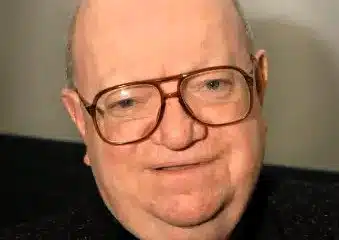Judge removes himself from death penalty case
Wednesday, June 16, 2010
By Mary Caffrey Knapke
DAYTON DEANERY — Montgomery County Common Pleas Judge A.J. Wagner recently removed himself from a murder case, citing his opposition to the death penalty.
Wagner, who is Catholic, also indicated that he will excuse himself from any future capital cases.
“I have given life sentences in the past and would not hesitate, given the proper circumstance, to impose life without parole. Death, however, is different,” Wagner wrote in his request for recusal, which was filed May 13. The 135-page document includes detailed explanations of his reasoning on constitutional and spiritual grounds, as well as supporting materials.
 |
| Judge A.J. Wagner (Courtesy photo) |
“I adhere to a belief that an individual’s temporal life begins at conception and ends when we are reclaimed by God,” Wagner wrote. “From my Catholic, Christian tradition I also hold the belief that we are all loved by God; that we are all forgiven of our sins; that we have been redeemed by the death of Christ who was unjustly killed through capital punishment; and that hope is available in the Resurrection.”
The case involves Cody Henderson, 20, of Miamisburg. A grand jury recently indicted Henderson on several felony counts, including aggravated murder and aggravated robbery. Because some of the charges carry death penalty specifications under Ohio law, Henderson will be eligible for death if he is convicted.
Wagner said that when he was first elected to the court in 2000, he thought he would be able to impose a death sentence. He attended a seminar for judges on capital punishment. “In particular, I think that class affected me. I realized we were talking about the question: How do we literally kill somebody?”
He began consulting family, friends and staff about the issue. “I did a lot of praying and a lot of talking to people whom I consider to be spiritual advisors,” he said.
Since withdrawing from the Henderson case, some have accused the judge of shirking his job responsibilities. Wagner responded by saying that death penalty cases are rare; this was his first in 10 years on the bench. In addition, he said that hearing the case while knowing he would not impose the death penalty would be “inappropriate and wrong.”
“I could’ve heard the case, and then if the jury recommended the death penalty, I could’ve just said, ‘No, I’m not going to do it,’ in which case, I’d have to quit my job, because I would not have upheld the law as I was sworn to do,” he said.
Another option was to recuse himself without comment. But ultimately, he decided to explain why he chose to withdraw from the case.
“I thought that I should justify myself. I thought that I should say, ‘These are the reasons why I’m doing it.’”
Wagner also noted other commentary on capital punishment. Nearly 50 years ago, the American Law Institute — an organization of 4,000 judges, lawyers and legal scholars — developed a framework for applying the death penalty. Last fall, the institute withdrew its standards, saying it “should not play a further role in legitimizing capital punishment.”
At the state level, Ohio Supreme Court Justice Paul Pfeifer commented last month that the state’s death row cases should be reviewed to determine which ones warrant execution and which ones should be commuted to life in prison without the possibility of parole. Pfeifer was one of three Republican state senators who restored Ohio’s death penalty law in 1981.
Within the church, the U.S. Conference of Catholic Bishops wrote in the 1998 statement Living the Gospel of Life: A Challenge to American Catholics that “Pope John Paul II has reminded us that we must respect every life, even that of criminals and unjust aggressors. . . . Our witness to respect for life shines most brightly when we demand respect for each and every human life, including the lives of those who fail to show that respect for others. The antidote to violence is love, not more violence.”
It is the notion of love that Wagner said he most often tries to use as a guideline in his work. He said he especially appreciates the words of St. Augustine, who served as a judge while also serving as Bishop of Hippo in the fifth century: “We should never undertake the task of chiding another’s sin unless, cross-examining our own conscience, we can assure ourselves, before God, that we are acting from love. . . . Act as you desire, so long as you are acting with love.”
“The bottom line is, it’s a judge’s job to love,” Wagner said. “If we get angry, if we get emotional, stop right there…. It’s a great guideline for how a judge should behave.”
Wagner said he is often asked what he would do if a friend or family member was killed. He acknowledged this would be a difficult and emotional situation but said he cannot predict what his exact response would be. However, he has drawn up a declaration stating that should he himself be murdered, he does not want his assailant to be executed.
“The reason that there is capital punishment is because we seek retribution. We seek vengeance,” he said. “There’s nothing that’s going to correct the situation. All I can do is say what I would want for myself.”
In 2009 there were 163 pending death sentences in Ohio, and five inmates were executed. Of these, one was from Hamilton County and one from Montgomery County; the others were from Lorain and Trumbull counties. Between 1981 and 2009, a total of 33 individuals were executed under Ohio’s current law.
Mary Caffrey Knapke can be reached at [email protected].













